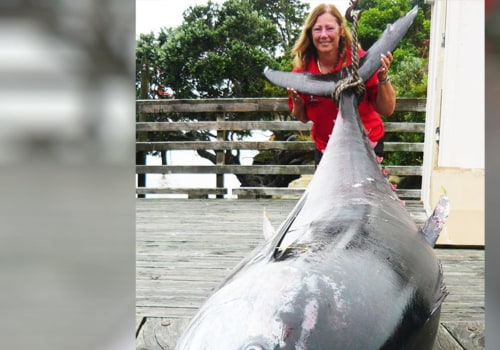All canned white tuna is albacore. Its mercury levels are almost three times higher than those of the smaller sautéed tuna used in most canned light tuna products. Canned albacore tuna normally contains about 0.32 parts per million of mercury. Canned light tuna contains approximately 0.12 parts per million of mercury.
Canned tuna has lower mercury levels than tuna steaks and sushi, and two meals of canned tuna a week are a safe threshold, according to the FDA. The agency is currently reviewing its guidelines on pregnancy and fish consumption; they hope to encourage more pregnant women and children to eat fish because of its many nutritional benefits. At 13 mcg per 4 ounces, light canned tuna falls into the “low mercury” category, along with others such as salmon (2 mcg of mercury per 4 ounces) and shrimp (less than 1 mcg per 4 ounces). Braised white tuna with sesame encrustations is a quick, super simple and highly nutritious dinner.
We source charcoal from several communities in Nunavut and offer it in frozen, boneless and skinned portions, in sizes that usually weigh about 1 pound each. The arctic pond is caught between the months of November and March. We usually sell them starting in December and they often sell out in late spring or early summer. Our wild, pink and spiny scallops are individually frozen and packaged in 2-pound packages.
They can be cooked frozen in one of your favorite clams or mussel recipes. In Vancouver, we offer live options on several False Creek Fishermen's Wharf vans throughout the year. Mussels are a special treat and we offer them every two weeks during their season, while live Dungeness crab and beach oysters are usually available several times a year. Scallops are caught between November and February of each year, but our goal is to keep them in stock all year round.
Live mussels can be harvested every two weeks between July and March. Live Dungeness Crab will only be available 2 or 3 times between October and March. Live beach oysters are only available 2 or 3 times between November and March. Beach oysters (Fishermen's Wharf only) Dungeness crab (Fishermen's Wharf only) Stitched prawns are caught during the months of May and June of each year and our goal is to store them at least until December of each year.
Albacore tuna is caught between the months of June and September, but our goal is to keep it in stock throughout the year. Cold smoked white tuna in slices. Halibut are fished between the months of March and November, red cod in May, sabers in summer and rockfish in late spring and summer. Our goal is to maintain stocks of halibut, red cod and rockfish all year round, while saberfish may be available mainly in late summer and autumn.
Salmon is caught between the months of June and October off the coast of British Columbia, but our goal is to keep it in stock all year round. Canned light tuna is the best option with less mercury, according to the FDA and the EPA. Canned albacore and yellowfin tuna have higher mercury content, but can still be eaten. Bigfoot tuna should be completely avoided, but that species isn't used for canned tuna anyway.
We also offer thin slices of cold-smoked tuna in packs of 100 g and three types of canned products: varieties of normal, unsalted and smoked tuna. Albacore tuna is caught at a relatively young age (3 to 4 years) compared to other species included in the list, such as sharks and other tunas such as bluefin tuna, which have a longer lifespan during which toxins can accumulate. The worst case scenario is when nets are used with floating fish aggregation devices (FAD), which attract all types of marine life, not just tuna, says Carrie Brownstein, global seafood quality standards coordinator at Whole Foods Market. A study that compared mercury levels in North Pacific albacore tuna with those in the Mediterranean showed a 10-fold increase in Mediterranean tuna.
Fortunately, it's easy to choose low-mercury fish that's also rich in healthy omega-3 fatty acids. When you eat certain types of fish, especially large, fatty fish such as tuna, mercury can also build up in your bloodstream over time. The health benefits of eating tuna have been widely promoted; it is a protein-rich fish with plenty of omega-3 fatty acids, vitamin D and selenium, a key trace mineral essential for supporting the immune system, brain function and reproductive health. If you are still looking for the increase in protein and omega-3 fatty acids that fish can provide, try replacing white tuna and any large, predatory fish in the diet with salmon, herring, sardine or anchovy.
However, bycatch and overfishing occur regardless of the species of tuna, so it's hard to say that one is better, from an ecological point of view, than the others, Brownstein says. . .




Leave Message